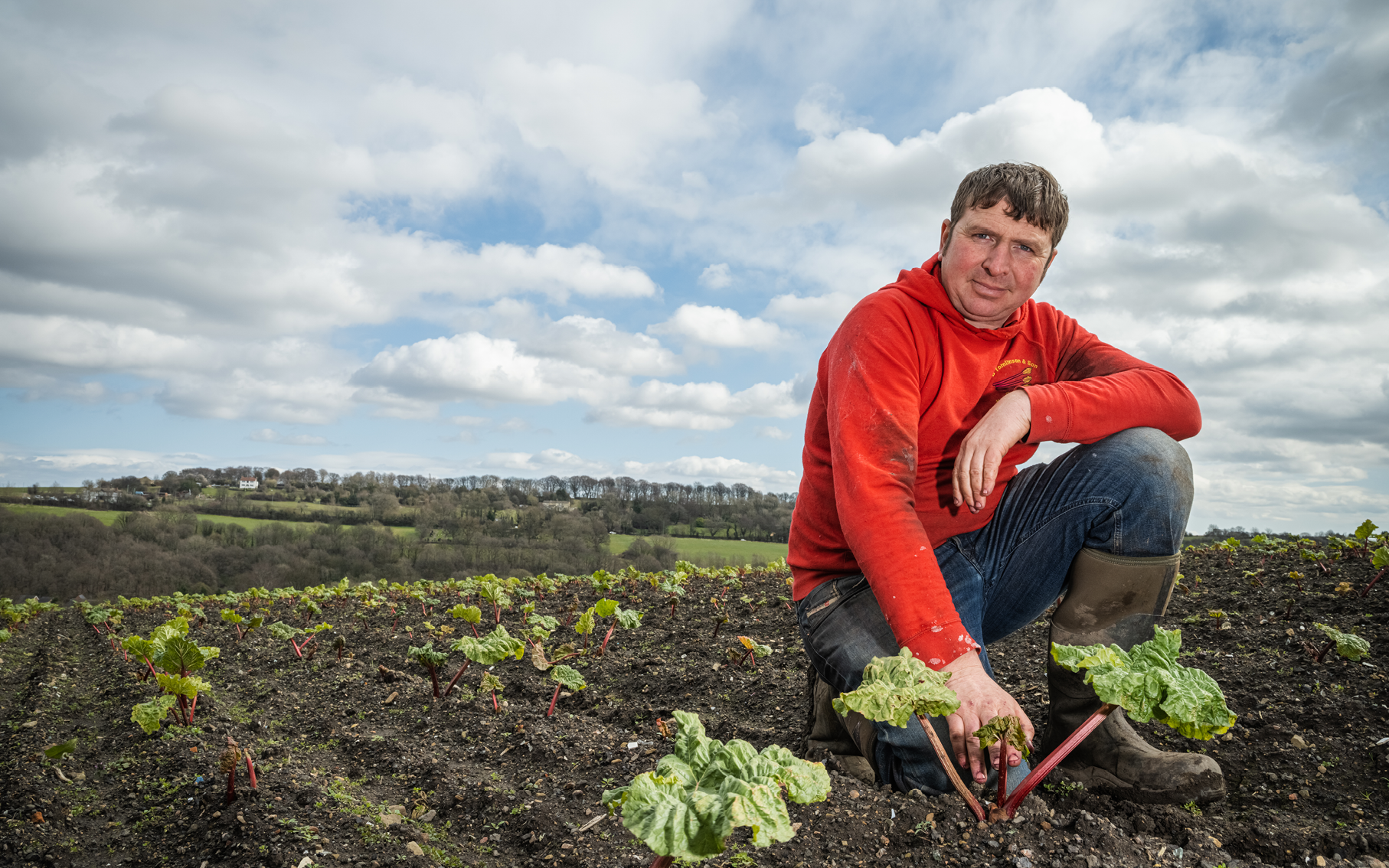Tomlinsons Rhubarb

IN SEASON JANUARY - APRIL
TOMLINSONS RHUBARB
Based in the heart of Yorkshire’s legendary ‘Rhubarb Triangle’, Leeds, Wakefield and Bradford, Tomlinsons are one of only a handful of forced rhubarb growers that still grow rhubarb the old way, just like their ancestors did for generations.
The Tomlinson family has been growing rhubarb on the same farm since the 1880s, and to this day it is still a family tradition. Now run by fourth-generation farmer Robert, his Great Grandad Robert started growing rhubarb, followed by his Grandad Bernard, and his father David who still helps on the farm.

It’s a long and intensive process for a harvest that lasts from January to April. The cycle begins two years earlier when roots are divided and planted outside, fertilised and kept clean. After the second summer, regular soil testing takes place and when cold enough the root balls are dug up by hand, some weighing 80 kilos, and transported inside the forcing sheds, known as cathedrals.
By brining the roots into the sheds, they are tricked into thinking it is spring. They are kept in total darkness at a constant temperature of 13℃. This forces the growth, which is so fast that in early January you can hear the creaking and popping of the stalks as they shoot up to find precious light. This technique is known as ‘forcing’ and why forced rhubarb has such a slender girth, bright colours and delicate sweet flavour.
The rhubarb is included in a crop rotation with phacelia and clover which are able to place nutrients and carbon back into the soil. this ensures continued soil health, as well as supporting wildlife on farm through these periods. Increasing soil cover where possible is one factor which is vital in reducing impact of farms on the environment and reducing soil erosion into our waterways. The use of these covers protects the watercourses from soil during the harsh and wet winters.

Picked daily and carefully by candlelight, which stimulates more growth in the smaller shoots left behind. Without the light, there is no photosynthesis within the plants, so the sugar stays within the stalks and produces a much sweeter and tender rhubarb than outdoor summer rhubarb.
First grown in Yorkshire in the 1870s, there were more than 200 commercial operations at one point. That number has dropped to less than a dozen centred on the triangle with its ideal growing conditions – a deep, cold and moist topsoil and frost pocket in the shadows of the Pennines. These conditions and its heritage helped the area achieve the much coveted Protected Designation of Origin (PDO) status in 2010.
MORE OF OUR PRODUCERS



